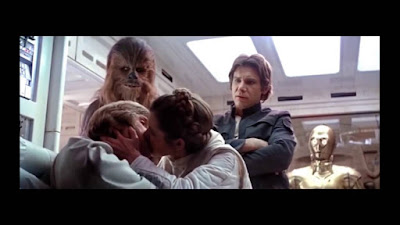"When a party descends into a dungeon for the first time, they must be ready to deal with the strange creatures they will meet: some foul, some fair, some intelligent, some not; the variety is endless. Such a meeting is called an encounter." - D&D Basic Rulebook (Moldvay) (1981)
To expand upon Messr Moldvay's description, by “encounter,” I mean the meeting of two or more non-allied groups. I know that some GMs equate “encounter” with “combat,” with their adventures boiling down to a series of fights, this is not the only way to play RPGs. Indeed, in the Old School idiom, combat is often deadly and only to be resorted to when one has a significant advantage or one has no other options.
Thus, it is important to remember that “encounter” doesn’t necessarily mean “combat”. While some NPCs can be assumed to be immediately hostile (e.g., undead, cultists), others may have different but not necessarily conflicting agendas with the PCs. For example, in the photo above from the all-time great film "Conan the Barbarian" (1982), Conan and Subotai bump into Valeria whilst robbing the temple. Instead of fighting each other, the three thieves team up and shenanigans ensue!
An often overlooked aspect of encounters in Dungeons & Dragons (and other games) that reinforce the notion that “encounter” =/= “combat” are reaction checks. In 1st edition Advanced Dungeons & Dragons, reaction checks are purely mechanistic:
"ENCOUNTER REACTIONS
Any intelligent creature which can be conversed with will react in some way to the character thot is speaking. Reaction is determined by rolling percentile dice, adjusting the score for charisma and applicable loyalty adjustment as if the creature were o henchman of the character speaking, and the modified score of the percentile dice is compared to the table below" - Dungeon Master's Guide (1979)
On the other hand, I prefer B/X's more flexible approach:
"MONSTER ACTIONS: Some monsters always act in the same way (such as zombies, who always attack). However, the reactions of most monsters are not always the same. The DM can always choose the monster's reactions to fit the dungeon, but if he decides not to do this, a DM may use the reaction table below to determine the monster's reactions" - D&D Basic Rulebook (Moldvay) (1981)
Thus, many NPCs, even hostile ones, can be reasoned with or bargained with- these are potential role-playing opportunities for the players! The GM should provide sufficient information and clues that players can reasonably deduce whether situations are beyond them.
 |
| Probably outgunned... |
The ability to improvise as a GM is also important here, since the players may have their characters act in ways that you don't expect. Furthermore, don’t be afraid to call a bathroom break if you need a few minutes to gather your thoughts or even to end a session early if you need to plan out or rework the next part of the campaign!






.jpg)





